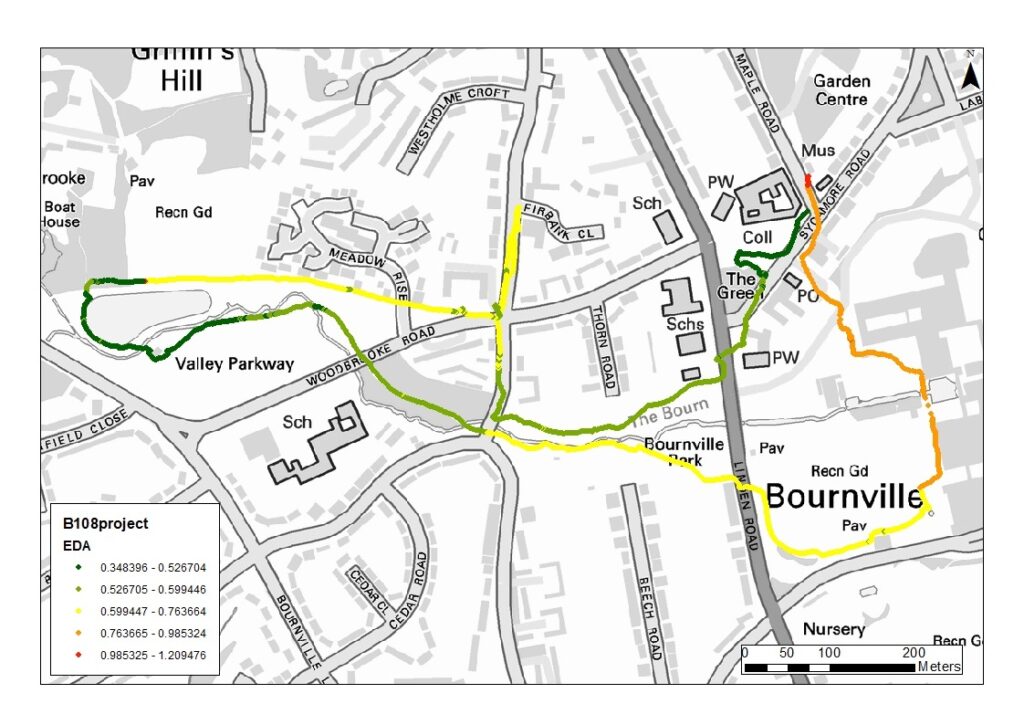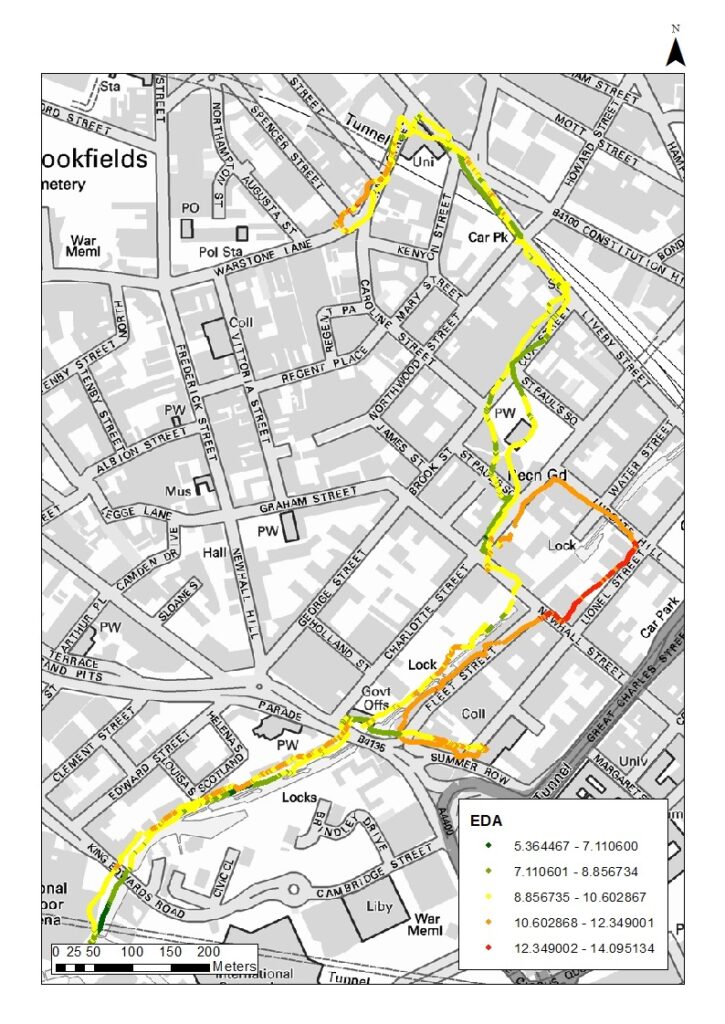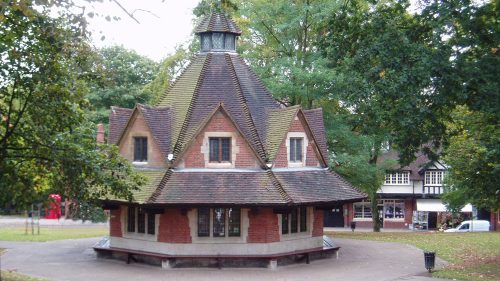Heritage typically refers to cultural landscapes and buildings, especially in relation to tourism and consumption1, or a tradition of inherited values and/or memories over time, which often manifest in a cultural performance2. What is clear from the many engagements with, and discussions on, heritage is that the term is very contested and can be interpreted in a variety of ways. Smith and Akagawa argue, however, that heritage comes from a set of intangible phenomena – any material, place or item of tangible heritage can only be recognised and understood as heritage through the values people and organisations give it3. As Munjeri states, “cultural heritage should speak through the values that people give it and not the other way round … the tangible can only be understood and interpreted through the intangible”4. All heritage is intangible, not only because of the values we give to heritage, but because of the cultural work that heritage does in any society3. As a result, the emotional and memorable aspects of heritage are “increasingly recognised that the driving force in motivating heritage conservation”2. Therefore, memory and emotion are key aspects of heritage especially since considering memory highlights the ways in which people have a say in the maintenance and management of heritage in their area. As such, heritage is what people ascribe as valuable.
Value, here, refers to “an organism’s facility to sense whether events in its environment are more or less desirable”5. As such value is strongly tied to perceptual processing which is not a solely conscious phenomenon. Perception occurs subconsciously through the sensorimotor processes of the body6. Therefore, to truly understand how people value different aspects of the surrounding environments, it is important to measure and understand the subject’s automatic reactions and responses. This paper therefore utilises biosensing technologies that make it possible to measure and represent the autonomic nervous system’s reactions in space. Biosensing here refers to a practice that uses information technology to understand the relationships of the body and space. The biosensors include, but are not limited to, heart rate, electrodermal activity (EDA), electroencephalograms (EEG), and blood volume pulse (BVP). Crucially these wearable technologies enable the body to speak for itself and, when combined with geographic information system (GIS), the analytical tool for spatial data including global position system (GPS) tracks, can measure and represent a person’s autonomic reactions to the urban environment in situ7,8.
This paper discusses a recent study in three heritage districts in Birmingham, UK: Bournville, Moseley and the Jewellery Quarter. The study adopts a mixed methods approach, using dry biosensing, GIS, interviews, and mobile video recordings, to interpret how the residents perceive the area in which they live. The results demonstrate how different types of heritage environments generate different responses from the body but, crucially, why the residents value these features of the landscape.
Biosensing
Biosensing technologies, as a collection of wearable technologies that measure the body’s automatic reactions to an experience, originally derive from neuroscience, psychology, and medicine. As such, for more than forty years these disciplines have utilised these technologies to treat various ailments and quantify human response to stimuli9,10. In the last twenty years, however, these biosensors were developed to be smaller and cheaper11 and consequently biosensors were not limited to medical laboratories but available to the public. Whilst this process stimulated the ‘quantified self’ movement with commercialised biosensors, such as Fitbits, becoming commonplace12, it also provided an opportunity for non-medical disciplines to explore the possibilities these sensors could provide.
There are various forms of biosensors, each of which measuring different aspects of the body. For instance, if someone wanted to measure their stress levels they could use “wet” biosensors, such as the cortisol levels in the saliva, or “dry” biosensors including EDA and EEGs13. These “wet” biosensors, however, are typically intrusive and involve handling bodily fluids; therefore, it can be difficult to undertake these measures outside of a laboratory setting. ‘Dry’ sensors, conversely, usually sit on the skin and are often mobile; as such it is possible to use the sensors to measure the autonomous nervous system’s responses to stimuli outside (Table 1). Furthermore, the modalities listed in Table 1 can be used to indicate the emotional reaction felt in response to the environment. For instance, the combination of a rise in EDA and a decline in skin temperature would trigger a cold sweat, which in turn would imply that the person was fearful or anxious8. It is important to stress, however, that biosensing wristbands are not always the most reliable measure of physiological response especially in regard to measuring emotional response. Indeed, Studio Huss has argued that EEG is a better measure for emotion response since the researcher is able to determine which areas of the brain are activated14. To allow the participants to be less self-conscious when walking around the public domain the wristband provided an effective instrument to record physiological response.
Table 1. Selected ‘dry’ biosensor modalities
| Sensor | Modality | Unit |
| Electromyograph (EMG) | The electronic activity in the muscles | Microvolt (μV) |
| Electroencephalograph (EEG) | The electronic activity in the brain | Hertz (Hz) |
| Thermistor | Skin temperature | °C/F |
| Electrodermalgraph (EDG) | The electronic conductance on the skin | Microsiemens (μS) |
| Photoplethysmograph (PPG) | Blood flow | nanoWatt (nW) |
| Electrocardiogram (ECG) | The electrical activity of the heart | Hertz (Hz) |
| Pneumograph | Respiration rate | Breaths/minute |
Using these technologies, the project examined participants’ emotional connection to the heritage conservation areas of Bournville, Moseley and the Jewellery Quarter, Birmingham, UK. All participants, who either lived or worked in the various areas, undertook an unaccompanied walk around the area for around forty-five minutes wearing the Empatica E4 wristband, a chest mounted GoPro camera and carrying a GPS recorder. Following the walk, they watched the video footage while undertaking a qualitative interview about their responses and experiences to the different spaces passed through. The mixed methods approach was inspired by the neurophenomenological tradition15,16: the use of both quantitative neuroscientific measures with qualitative interview methods. Whilst other research that has used these technologies has attempted to ground truth the data generated through either smartphone applications8, elicitation interviews7, or video recordings17, scholars who study emotion stress the importance of allowing participants to fully explain their feelings and past experiences when doing emotional research18. Therefore this project, inspired by the work of Nold and Ruskamp, stressed the importance of ground-truthing the biosensing data through in-depth qualitative interviews7,17.
Valued heritage and biosensing
The three case study heritage areas have unique characteristics, from Bournville’s arts and crafts garden village style to the Jewellery Quarter’s strong industrious past. Each of these areas encompasses homes, places of work, and recreational spaces for fairly large populations. Three types of heritage architecture can identify these areas; Moseley and Bournville have a large quantity and quality of the Arts and Crafts houses built in the early twentieth century. Typically this style, deriving from William Morris’ rebellion against industrialisation and loss of craftsmanship, can be identified by the use of a variety of materials, asymmetric design, traditional construction and craftsmanship, and clarity in the form and structure19. Additionally Moseley is home to many large Victorian villas and three-storey Edwardian terraces, thus making is a desirable place to live with large properties. Both Moseley and Bournville are situated in the southern suburbs of Birmingham, making them green and spacious. The Jewellery Quarter, on the other hand, has a very industrious past. The area specialised in jewellery (and other small metal items) manufacturing20, and although the industry has declined there is a still a small level of production in the area. The old factories have since been converted into residential blocks as well as bars, restaurants and pubs21. As such, the area is typically home to young professionals working in the city centre, a short walk away.
Bournville is an attractive green suburban settlement designed to look like an English country village. The participants found walking around the area a pleasant experience with the greenery, arts and crafts style and constant architectural surprises stimulating various reactions. Figure 1, for instance, shows the EDA levels recorded whilst undertaking a walk in the area. In this example the participant’s stress levels decline whilst he is walking around the Valley Parkway boating lake and the historical village Green at the heart of Bournville’s heritage conservation area.

FIGURE 1: BIOSENSING MAP FOR B108’S WALK IN BOURNVILLE, 09/08/16.
Indeed, B108 (as well as many of the other participants) expressed a liking for the Green area: “I like the green. I’ve worked here for a long time and I always remember that I came here for an interview – I was interviewed in a building just over there when I got a job here and the day before I came and had a look, I sat on the village green and thought “this would be a nice place to spend your time” (Interview with B108, 09/08/2016). Green open spaces are a valued asset for the residents of Bournville, and this tradition can be traced back to the founding of Bournville by George Cadbury. He believed that placing his workers in a green environment would benefit their physical and mental wellbeing. As such, efforts were made to encourage recreation, especially gardening, into the development of the Bournville estate. For example, 80% of property land must be for gardening and 10% of the original village was reserved for green space22. Even after Cadbury’s death in 1922, large open lands continued to be purchased and turned into recreational grounds. Rowheath, for example, was turned into football and hockey pitches with a running track and a Pavilion designed in accordance with Cadbury’s plans. This highlights that this aspect of Bournville’s heritage is valuable to the community.
The appeal of green space was also apparent in the green spaces of Moseley. Moseley has a private park and lake, which is only accessible to those who pay the membership. The land was originally part of the Moseley Hall estate but was separated by the building of Salisbury Road through the middle. The local businessmen were concerned that the land would be developed into an estate of Edwardian villas and consequently bought the land to create a public space23. To cover the maintenance and management costs, the residents of Moseley were required to pay a fee for access, which has continued until the present day. Whilst this may seem as exclusory, the participants see it as an important part of the area’s history: the community coming together to protect a valued part of Moseley.
Aside from the green spaces of Bournville, the residents responded positively to the idiosyncratic nature of the Arts and Crafts houses. The ‘Bournville style’ featured modest ornamentation and variation in the property size and style22. Consequently, the houses are not uniform differing from road to road and terrace block to terrace block. The idiosyncrasy of the buildings are preserved to the delight of the residents: “It’s made to look different and I think that’s nice, I think that makes a much nicer character to an area. It’s sort of borrowing from heritage, that’s how things develop but I think they have done it well. There is a nice mix, there’s a nice mix of materials, there is a nice mix of design, and there is a nice mix of sizes” (interview with B113, 17/08/16).
Moseley is also home to a large collection of Arts and Crafts houses and the participants, again, favoured the style. Many of the participants commented on the houses on Chantry Road, which is the location of some of the largest houses in the area. These houses were built with consultation from owners. As such, each house had little features to reflect the owners. For instance “the houses were influenced in their design and features by the people who bought them. So they would by the shell of the house and then they would work with the builders to create their little embellishments that were individual to that house. So, for example, I noticed on the walk today … that on some of the guttering features was the Star of David” (Interview with M106, 30/11/16).
The Jewellery Quarter on the other hand is a collection of tightly packed old industrial buildings. One new resident to the area even commented that she was bored in the walk due to the uniform nature of these buildings. Additionally, many of the older (and now dilapidated) buildings are being demolished to build new blocks of flats. For example, in Figure 3 the section high EDA activation along Lionel Street was due to the participant’s dislike for/anger towards the new blocks of buildings that are ‘heartless’ and without character unlike the older buildings of the area. As such, it is the older buildings that are valued by the residents.

FIGURE 1: BIOSENSING MAP FOR B108’S WALK IN BOURNVILLE, 09/08/16.
Heritage in the modern city
Not all heritage features, however, meet the requirements of modern life or the area’s changing population. Indeed the old stately homes of Moseley, Highbury Hall and Moseley Hall, have been reappropriated. The estate of Highbury Hall is now a public park and home to a community orchard, who serve to protect the living heritage of the landscape. Moseley Hall, on the other, has now become a mental health hospital and community groups maintain its lands. Additionally new developments have to occur to counter the demands from growing populations in urban areas. Whilst the Jewellery Quarter has many new blocks of flats being built to the displeasure of the current residents, this is not to say that new developments are necessarily negatively affecting the residents. For instance the Jewellery Quarter recently built a new open space in the heart of the area named Golden Square, which drew on the heritage and craft associations of the Quarter in its design24. This popular square, which is now home to the Jewellery Quarter Festival, is a wonderful example of urban revitalisation of its heritage whilst fitting the needs of its population. As such a balance has to be struck between the preserving and constructing – I refer to this as revitalising the urban landscape. Revitalisation is the giving of new life to an urban area through the preservation of heritage features whilst providing new features that complement the area’s heritage.
Conclusion
Heritage, or what is preserved in an area, has emotional and memorable ties. Therefore, those who live or engage with the area typically value what is preserved or maintained. Whilst I have only discussed the major aspects of heritage in the areas of Bournville, Moseley and the Jewellery Quarter here, these examples show the value that residents ascribe to green spaces and the idiosyncratic architecture. Both have strong ties to the history and ethos of the areas whilst providing a pleasant and stimulating environment. As such these two aspects of the landscape and the preservation undertaken by the city council and the various community societies have revitalised and promoted the character of the area.
It has been widely argued that green space is beneficial to mental and physical health, especially regarding stress reduction25-27. Whilst my findings offer some evidence to support this, I additionally argue that in these specific heritage areas it allows the residents to be a part of the area’s history. Indeed, scholars who study heritage argue that some find satisfaction in being part of a historical tradition whether that is paying for access to a park or keeping an apple tree in their garden2,28. Regarding the built environment, however, a varied and rich landscape stirs a positive reaction from people. In fact, the Arts and Crafts movement was a retaliation to mass production, monotony of design, and loss of craftsmanship during the Industrial Revolution19. It has already been demonstrated that bland, monotonous, and passionless landscapes increase levels of sadness, addiction, and disease-related stress29 and even in the late 19th century, William James argued that “stimulation is the indispensable requisite for pleasure in an experience”30. This is not to say that all modern buildings are bland and monotonous, instead I suggest that the historical city should be revitalised and new spaces and structures sympathetic to that history.
References
- Orbasli A. Tourists in Historic Towns: Urban Conservation & Heritage Management. London: E & FN SPON; 2000.
- Benton T. Understanding Heritage and Memory. Manchester: University of Manchester Press; 2010.
- Smith L, Akagawa N. Introduction. In: Smith L, Akagawa N, eds. Intangible Heritage. London: Routledge; 2008:1-9.
- Pg.13 Munjeri D. Tangible and intangible heritage: from difference to convergence. Museum Int. 2004; 56(1-2):12-20.
- Dolan RJ. Emotion, cognition, and behaviour. Science (80- ). 2002;298(5596):1191-1194.
- Damasio A. The Feeling of What Happens: Body and Emotion in the Making of Consciousness. New York: Harcourt; 1999.
- Nold C. Emotional Cartography: Technologies of the Self. Creative Commons; 2009.
- Resch B, Sudmanns M, Sagl G, Summa A, Zeile P, Exner J-P. Crowdsourcing Physiological Conditions and Subjective Emotions by Coupling Technical and Human Mobile Sensors. J Geogr Inf Sci. 2015; 1:514-524.
- Everly Jr. G, Rosenfield R. The Nature and Treatment of the Stress Response: A Practical Guide for Clinicians. New York: Springer; 1981.
- Schwartz MS, Andrasik F. Biofeedback: A Practioner’s Guide. New York: Guilford Press; 2003.
- Neff G, Nafus D. Self-Tracking. Cambridge, MA: MIT Press; 2016.
- Swan M. The Quantified Self: Fundamental Disruption in Big Data Science and Biological Discovery. Big Data. 2013;1(2):85-99.
- Nafus D. Quantified: Biosensing Technologies in Everyday Life. Cambridge, MA: MIT Press; 2016.
- Huss S. Measuring human experiences of public spaces: A methodology in the making. Conscious Cities. 2016;1.
- Varela FJ. Neurophenomenology: A methodological remedy to the hard problem. J Conscious Stud. 1996;3(4):330-350.
- Gallagher S. Neurophenomenology. In: Bayne T, Cleeremans A, Wilken P, eds. Oxford Companion to Consciousness. Oxford: Oxford University Press; 2009:470-472.
- Ruskamp P. Your environment and you: investigating stress triggers and characteristics of the built environment. 2016.
- Bondi L. Making connections and thinking through emotions: Between geography and psychotherapy. Trans Inst Br Geogr. 2005;30:433-448.
- Davey P. Arts and Crafts Architecture. Michigan: Phaidon; 1995.
- Cattell J, Ely S, Jones B. The Birmingham Jewellery Quarter: An Architectural Survey. Swindon: English Heritage; 2002.
- Aboutorabi M, Wesener A. The Changing Pattern of Urban Form in Relation to the Perception of Happiness in Georgian Birmingham. In: Bartetzky A, Schalenberg M, eds. Urban Planning and the Pursuit of Happiness. Berlin: Jovis Verlag; 2009:34-51.
- Bailey AR, Bryson JR. A Quaker Experiment in Town Planning: George Cadbury and the Construction of Bournville Model Village. Quaker Stud. 2007;11(1):89-114.
- Fairn A. A History of Moseley. Birmingham: 600 Celebrations Commitee; 2004.
- Birmingham Jewellery Quarter. The Golden Square. 2017. http://www.birmingham-jewellery-quarter.net/about/the-golden-square/. Accessed February 14, 2017.
- Bowler D, Buyung-Ali L, Knight T, Pullin A. S. The importance of nature for health: Is there a specific benefit of contact with green space? October. 2010;44(0):1-57.
- Maas J, Verheij RA, Groenewegen PP, de Vries S, Spreeuwenberg P. Green space, urbanity, and health: how strong is the relation? J Epidemiol Community Health. 2006;60(7):587-592. doi:10.1136/jech.2005.043125.
- Aspinall P, Mavros P, Coyne R, Roe J. The urban brain: analysing outdoor physical activity with mobile EEG. Br J Sports Med. 2013;49(4):1-6.
- Dicks B. Heritage, Place and Community. Cardiff: University of Wales Press; 2000.
- Ellard C. Places of the Heart: The Psychogeography of Everyday Life. New York: Bellevue Literary Press; 2015.
- James W. Principles of Psychology: Volume I. New York, NY: Henry Holt and Company; 1890.

